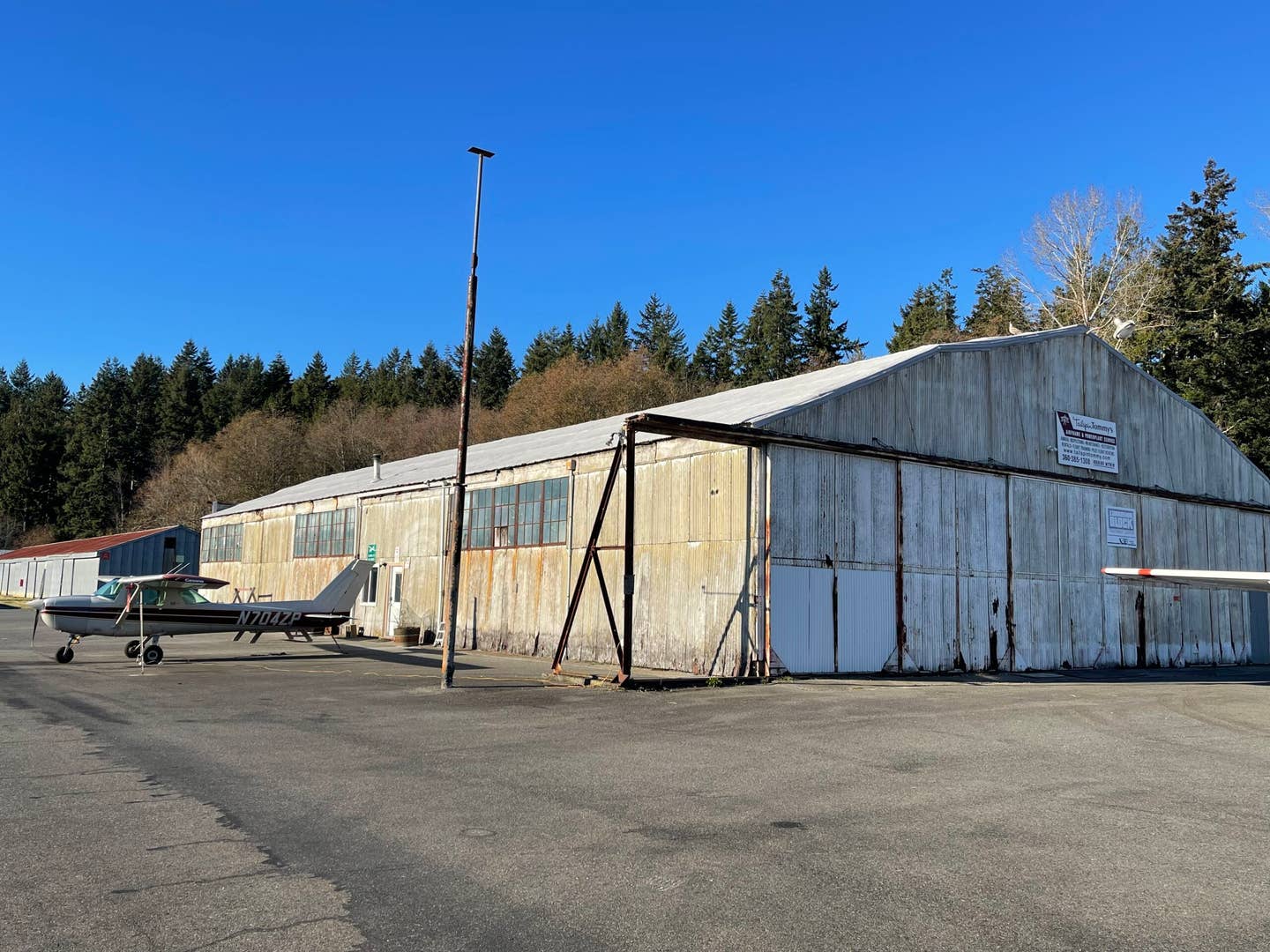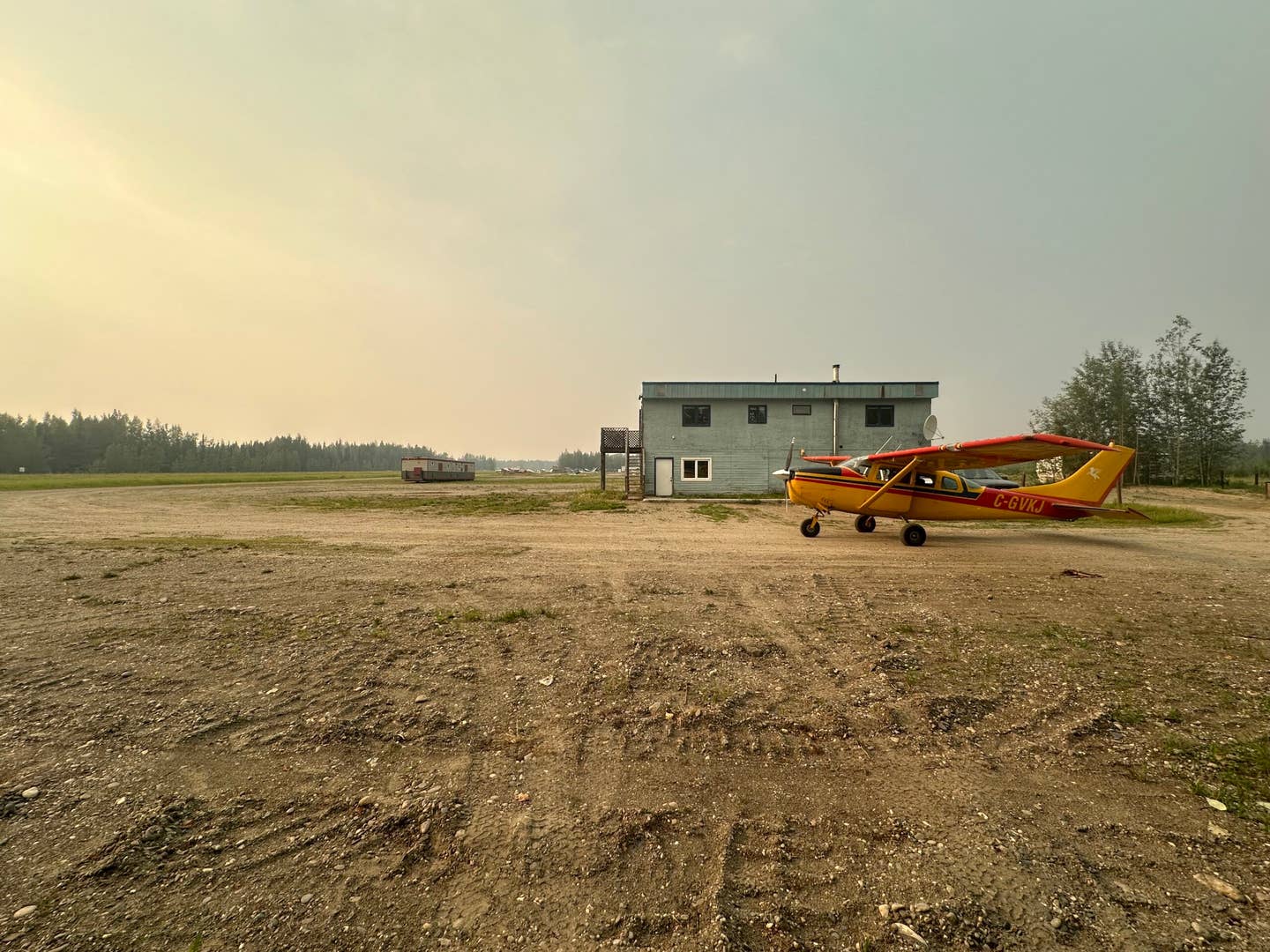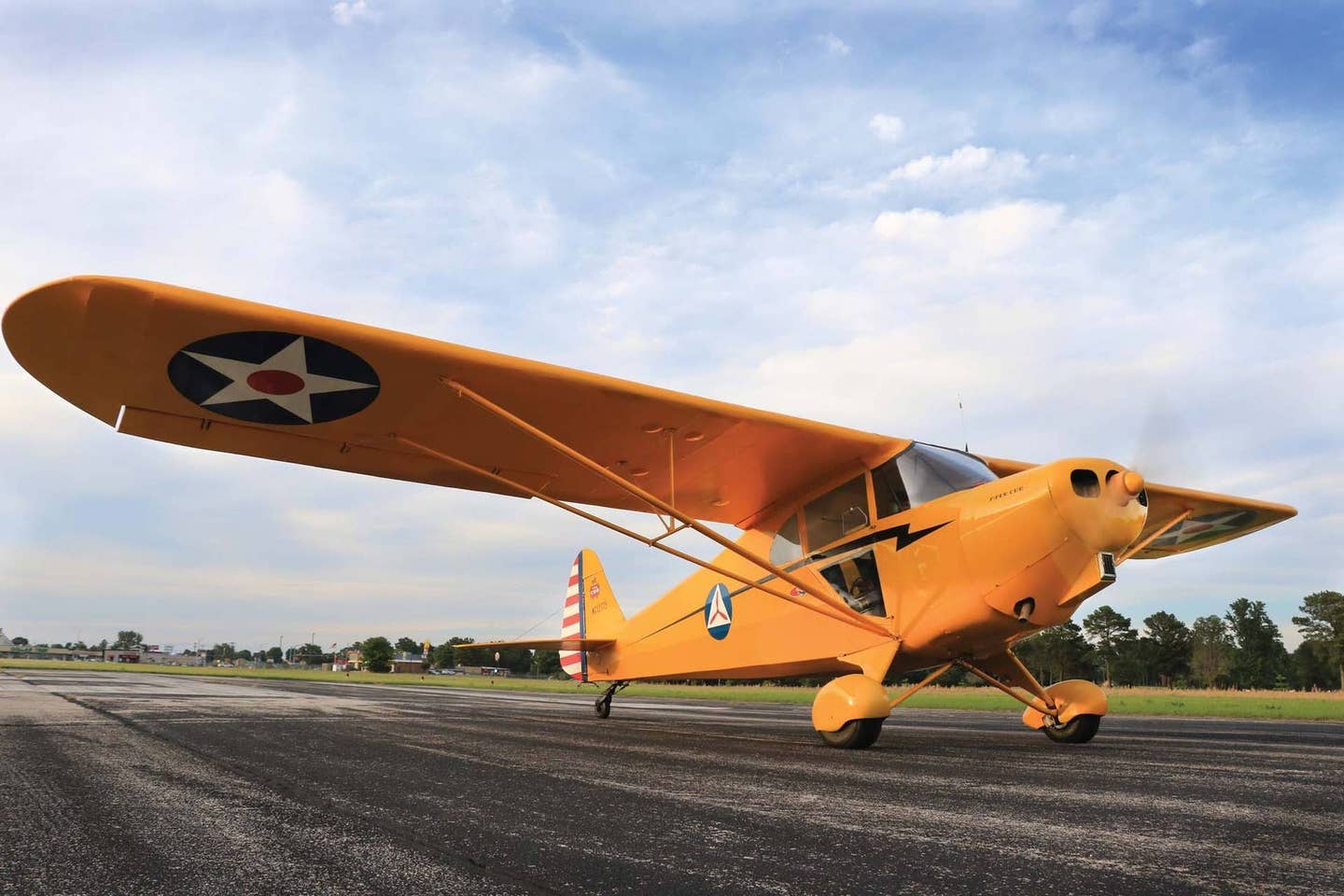Historic Hangars of the Pacific Northwest
A weathered hangar at Jefferson County International Airport has housed plenty of aircraft maintenance and aviation history.

The metal hangar at Jefferson County dates back to World War I. [Credit: Summer Martell]
"How old is that hangar? It looks like something out of the 1920s."
One of my learners made this remark after landing at Jefferson County International Airport (0S9) in Washington. The hangar is a weather-beaten metal structure with lines of square windows at the roofline. You half expect to see the doors being pushed open by men wearing coveralls and newsboy caps so that an open cockpit biplane occupied by a pilot wearing a leather helmet can be pushed onto the ramp.
That's probably happened, says Lee Corbin, a Seattle-area retired military and commercial pilot and local historian. According to Corbin, the metal hangar at Jefferson County dates back to World War I. It was a pre-fabricated steel and sheet metal hangar known as a United States All-Steel Hangar, built by the Carnegie Illinois Steel Company.
"This particular hangar was originally built at Rockwell Field down at San Diego. With the opening of Seattle’s first airfield at Sand Point on Lake Washington, the Army decided they would send a small detachment of aircraft to have a presence in the Pacific Northwest," says Corbin. "The hangar was disassembled then shipped north to Sand Point in 1922."
Sand Point evolved into Sand Point Naval Air Station. The base was used for training and support through World War II, the Korean conflict, the Cuban Missile crisis, and Vietnam. The proximity of the base to the populated bedroom communities for Seattle resulted in the base closure in 1970. Much of the property was repurposed. Today the property known as the Sand Point Naval Air Station landmark district occupies 89 acres. Several of the original buildings are still intact but the open areas that once were runways have become trails and athletic fields. Most of today's visitors don't realize that a great deal of Seattle's aviation history happened at the location.
The metal hangar spent about 10 years at Sand Point and had a few famous tenants, notes Corbin. "We know the Spirit of St. Louis was hangared overnight in September 1927, during Lindbergh’s tour of the U.S. There’s also a good possibility it was used during the three weeks of preparation of the Douglas [World] Cruisers for the Army’s round the world flight in 1924. It remained at Sand Point until 1931 when they disassembled it again and moved it to a newly created Army emergency airfield at Fort Townsend, over by Port Townsend, Washington."
Jefferson County International Airport (0S9), Port Townsend, Washington, as it is officially known, sports a 3,000-foot by 75-foot paved runway. The airport is listed on the Seattle VFR sectional as an AOE, or airport of entry, which means customs can be cleared at the airport.
The airfield was declared surplus by the military after WWII, and turned over to the city of Port Townsend in 1947. The airport is the home of the Spruce Goose Restaurant, a place where the pie is so good it is spoken of in hushed, reverent tones, even by the aviation-challenged.
Today the metal hangar is still active. It houses Tailspin Tommy's, an aircraft maintenance shop owned by Scott Erickson, an AP/IA. Erickson purchased the business from Tommy Wacker in the 1990s. Wacker's was the second maintenance operation to occupy the space.
According to Erickson, there have been some changes to the building over its lifespan at Jefferson County. "There is a stamp in the concrete floor indicating it was poured in the 1930s—it reads July 10, 1930. The hangar is the largest hangar on the field. If an airplane can't fit in other hangars on the field they put it in here. However, it does have some quirks though, because of its age."
Erickson says he's been working with the county, which owns and operates the airport, to keep up the maintenance on the vintage building to keep it safe and usable while simultaneously keeping its vintage look.
“I enjoy being in there doing maintenance alone when it's quiet. because there has been so much maintenance in that hangar," he says. "I enjoy getting completely absorbed in aviation… that’s what it is all about. All the pilots come by and visit."
The WWI Hangar Turned Shell House
On the shores of Lake Washington is another vintage aircraft hangar which you may soon see in a major Hollywood movie: it is the all-wooden hangar built during World War I to house seaplanes that were used to train naval aviators, and it later became a home to the crew team of the University of Washington. The building, located northeast of the Montlake Cut on Union Bay, still belongs to the university.
According to Corbin, the University of Washington was one three universities selected by the U.S. Navy to train aviators during the war. "The others were Massachusetts Institute of Technology and Dunwoody Industrial Institute in Minneapolis. These are trade schools that turned out high-quality naval aviation cadets that would go on to naval flight training," he said.
"What makes this hangar so unique is the fact that it is constructed entirely of wood, making it the only known, all-wood, WWI-era, Navy seaplane hangar remaining in the world," Corbin continued. "Unfortunately, it was completed after the war ended and only saw service as an actual seaplane hangar for a few weeks as the Navy’s aviation ground school classes finished up by the end of January 1919. But that allowed the opportunity for it to become the most unique shell house in the collegiate rowing world."
The university is in the process of raising funds to restore the building, and they want to recognize both the military and athletic use of the facility.
"The facility saw about 15,000 volunteers come through during WWI," says Nicole Klein, capital campaign manager for the Associated Students of the University of Washington. "The building had a metal steel trolley that was used to hoist the seaplane out of the water."
According to Klein, between 1920 and 1949, the 12,000-square-foot building was utilized by the UW men's rowing team, and George Pocock, a legendary boat builder, had a workshop in the structure where he built the shells that took the UW team to Olympic gold in 1936 and 1948.
The 1936 team is the subject of Daniel James Brown's 2013 book, The Boys in the Boat, which has been adapted into a film produced by George Clooney. The story follows the University of Washington men’s rowing team as it moves past collegiate rowing giants Harvard and Yale and ultimately go to the 1936 Olympics. The project, which was announced in 2018 was delayed by the pandemic. Filming was done in Los Angeles, Berlin, and at Winnersh Film Studios in Berkshire, U.K., where a replica of the shell house was built.
According to Klein, "The hangar turned shell house was placed on the National Registry of historic places in the 1970s, and it became a Seattle landmark in 2018." That was also the year that the ASUW launched a fundraising campaign to restore the building and bring the large wooden structure up to code so that it can be used for rental of public gatherings and educational tours.
"Many visitors are surprised at how large the all-wooden structure is. The Pocock Shop is a small upstairs loft that was able to produce racing shells up to 60 feet long," says Klein. "Once the restoration is complete it will be open for tours and event rental, it seats 350. The location on the water makes it a prime location for watching regattas and holding picnics."
If you would like to help restore the shell house, donations can be made here.
What Can You Do To Help?
There are vintage hangars all over the United States, maybe even in your part of the world. If you would like to preserve and perhaps restore the building there are steps to take.
The National Register of Historic Places is the official list of the Nation's historic places worthy of preservation. Authorized by the National Historic Preservation Act of 1966, the National Park Service's National Register of Historic Places is part of a national program to coordinate and support public and private efforts to identify, evaluate, and protect America's historic and archeological resources.
Begin the process with your State Historic Preservation Office and check their web page for National Register information, research materials, and necessary forms to begin the nomination process. If the property and or building is on federal or tribal land, the process begins with the Federal Preservation Office or Tribal Preservation Office.
The property's age (at least 50 years old), and cultural significance and integrity are taken into account.

Subscribe to Our Newsletter
Get the latest FLYING stories delivered directly to your inbox






